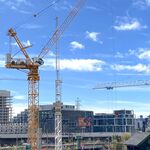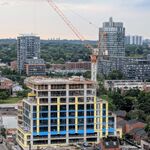Juan_Lennon416
Senior Member
Whether it is LRTs or subways that get built...I'm still driving to work. I do not think TTC could do anything to get me back onto their system
Last edited:
Whether it is LRTs or subways that get built...I'm still driving to work.
With things in a state of flux it's no surprise Queen's Park and Ottawa are holding firm with current funding levels, but that could change at budget time and, especially, during the Provincial election campaign. Of course, there's also a danger funding could be reduced (as the Province has already done once) due to larger-than-expected deficits.Are you bringing the extra money to the table needed to fund both those projects? According to those signing the cheques, it ain't there now.
Why would anyone expect more serious DRL consideration in Ford's administration than there was in Miller's? I just worry whether Toronto will be ready to act if York Region successfully pushes the Yonge extension to the top of the priority list -- and I think York will be successful sometime this decade.I'm hoping the compromise is replacing the SRT to SCC with a subway, an LRT to Malvern, starting the DRL, building LRT on Eglinton, and if LRT on Sheppard is so unpalatable then build BRT there.
there's also a danger funding could be reduced (as the Province has already done once) due to larger-than-expected deficits.
Ridership projections on the DRL would likely be high enough that it wouldn't be a huge money suck. The other two examples would definitely suffer from the same thing, though I think they have higher projected ridership than Sheppard.
As much as the DRL would be good for passengers, most of its trips would be diverted from other TTC routes, not new ridership, so it doesn't help the operating budget much. I would think this is partly why the TTC has so little interest in it.
That's a good point, though conceivably they could save money by reducing streetcar service along the DRL route.
That's a good point, though conceivably they could save money by reducing streetcar service along the DRL route.
So financial efficiency (ie not wasting money) is not a relevant issue? Did you not follow Rob Ford's campaign about gravy trains?

The Toronto Environmental Alliance released an infographic today comparing Ford's plan with Transit City:

Large size
Making Tracks to Torontonians examines the costs and benefits of the subway extension proposed by Toronto Mayor Rob Ford in December 2010, compared to the light rail transit plan that is already underway with funding on the table.
The subway extension would provide less service per dollar invested than the existing light rail rapid transit plan for Toronto, and wouldn't deliver transit service to the communities that need it most
This is an extremely off topic question, but one thing i was thinking of was why was Sheppard chosen for the new subway back when it was proposed and built? Had any consideration been given at the time to a Steeles subway for cost sharing purposes?
Where as Sheppard could only get funding from City of TO and Ontario, a Steeles subway could have gotten money from York Region and Town of Markham as well? Thinking now it seems logical, and as far as I can tell Sheppard had no particular reason for getting a subway?




